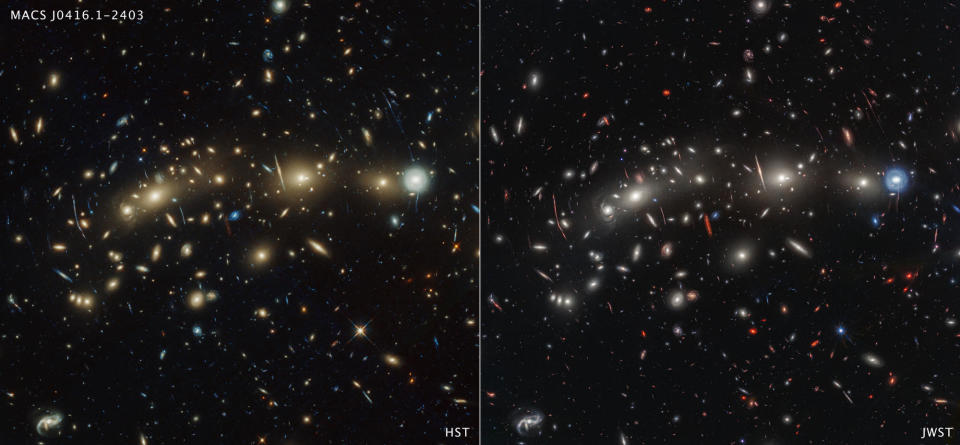NASA telescopes capture "Christmas tree" view of universe
A dazzling new image produced using both the James Webb Space Telescope and the Hubble Space Telescope has revealed one of the most detailed views of the universe to date, NASA has announced.
Created by combining infrared data taken by Webb and visible light observations collected by Hubble, the resulting picture shows a distant pair of colliding galaxy clusters through a range of light wavelengths so vast it seems to sparkle with color.
The galaxy clusters, which scientists expect will combine at point to form an even larger cluster, is located about 4.3 billion light years from Earth, according to NASA. Although technically called MACS0416, experts involved in the massive study have colloquially named the bundle of celestial objects the "Christmas Tree Galaxy Cluster" because of its distinctively polychromatic appearance.

"We're calling MACS0416 the Christmas Tree Galaxy Cluster, both because it's so colorful and because of these flickering lights we find within it. We can see transients everywhere," Haojing Yan, an astronomer and professor at the University of Missouri, who was the lead author of one paper reviewing the results of the joint galactic study by Webb and Hubble, said in a statement.
The announcement itself came alongside a handful of images of the Christmas Tree cluster, one of which shows a particularly magnified background galaxy, with a star nicknamed "Mothra," that scientists believe existed about 3 billion years after the big bang — roughly 11 billion years ago. By comparison, the sun in our solar system formed around 4.6 billion years ago, around the same time as Earth.

"Mothra" is one of 14 transients — objects in space that vary in brightness over time — identified in the study of MACS0416. Finding transients in faraway galaxies was one of the research team's main goals when they set out to combine observations from different telescopes, NASA said.
The galaxy clusters seen in the new images were among the first in a series of super-deep views of the universe that NASA called "unprecedented." They were initially identified through a Hubble program called the Frontier Fields, which launched in 2014, and eventually studied more comprehensively by the relatively more powerful deep-space observational capabilities of Webb, which was developed later.
"We are building on Hubble's legacy by pushing to greater distances and fainter objects," said Rogier Windhorst, an astronomer with Arizona State University. Windhorst was the principal investigator of the Prime Extragalactic Areas for Reionization and Lensing Science, or PEARLS, program, which handled the Webb observations of MACS0416.

"The whole picture doesn't become clear until you combine Webb data with Hubble data," Windhorst said.
In the images, outer space objects color-coded in blue represent the shortest wavelengths observed in the study, which were usually taken by Hubble, while those color-coded in red represent the longest wavelengths, usually taken by Webb. NASA said the coloring hints at the distances of galaxies seen in the survey, with the bluest galaxies believed to be relatively nearby and the redder galaxies farther away. Some galaxies that appear red in the images "contain copious amounts of cosmic dust that tends to absorb bluer colors of starlight," NASA said.
The Woolly Worm Festival, inching to predict winter's weather

